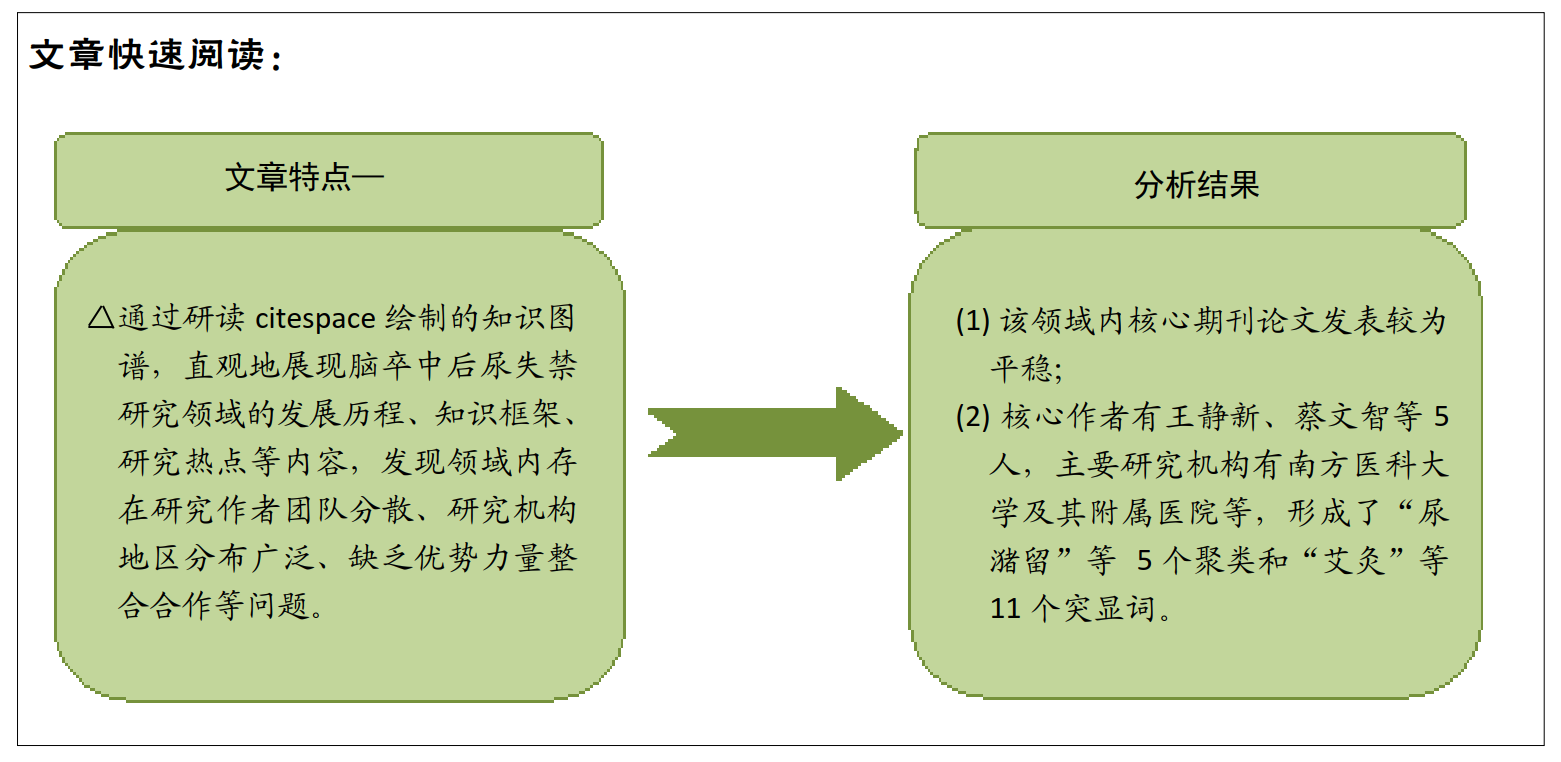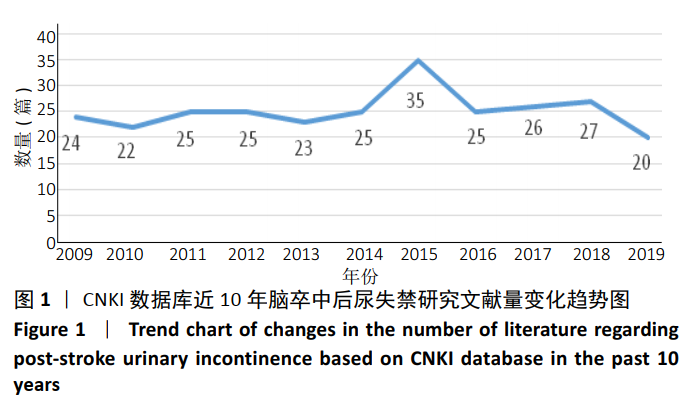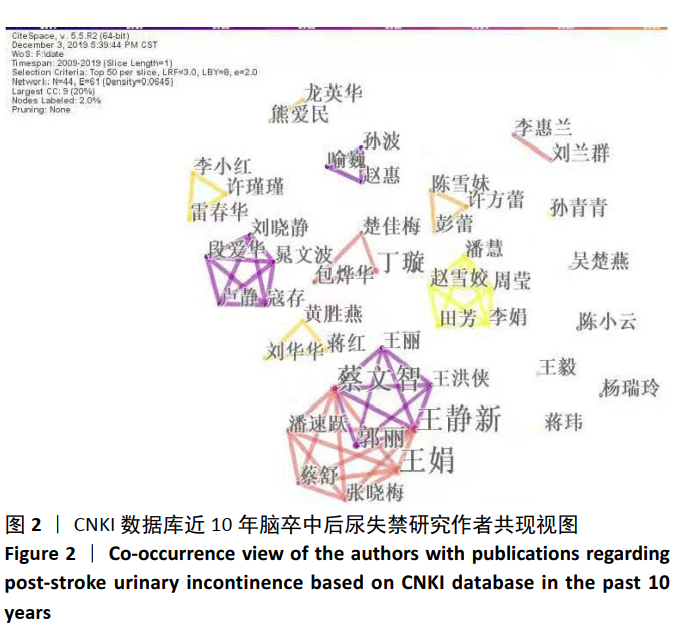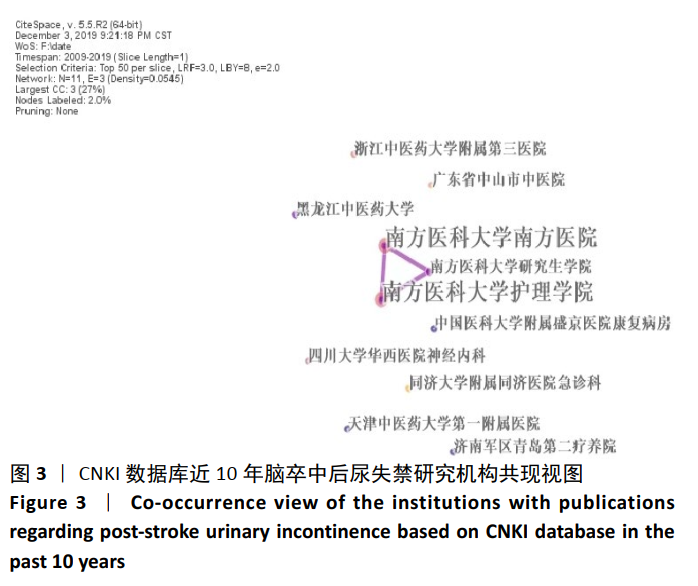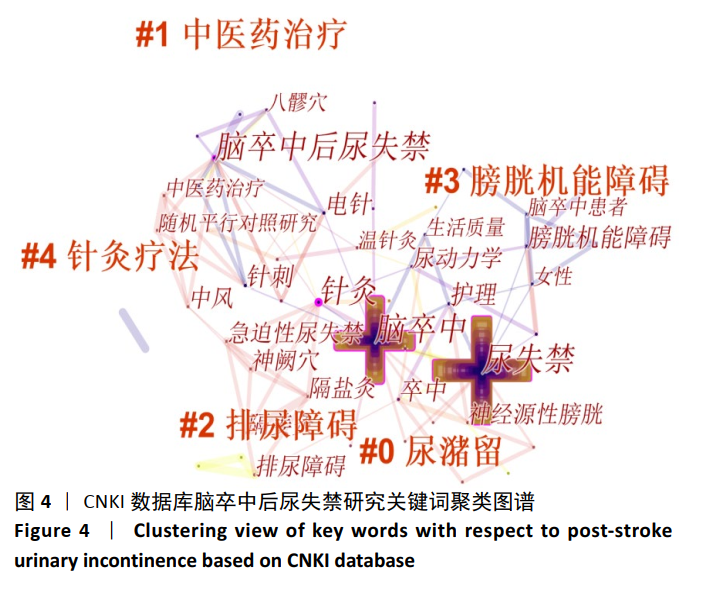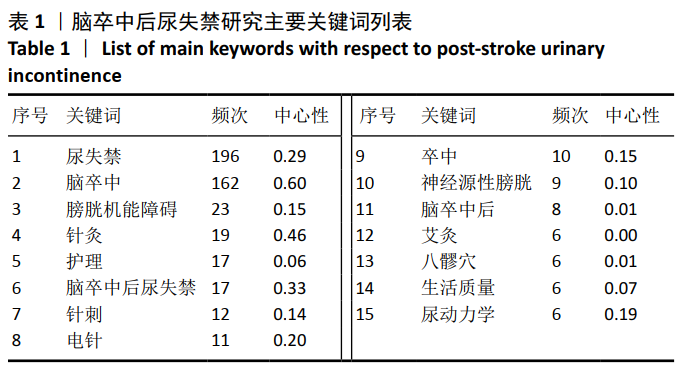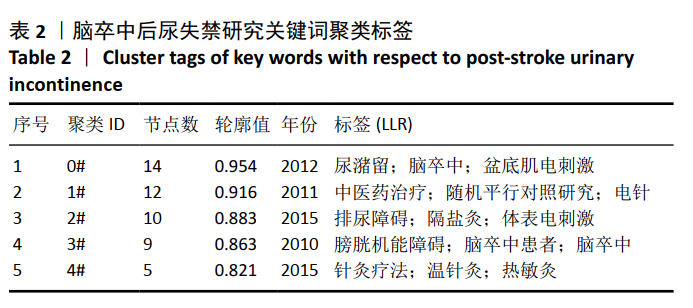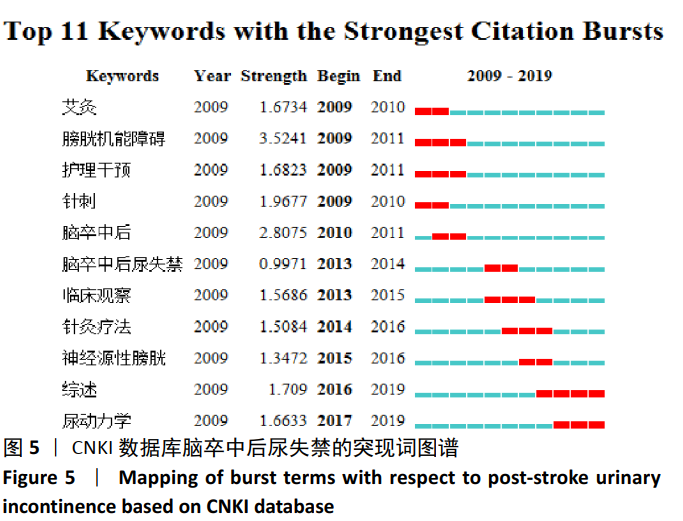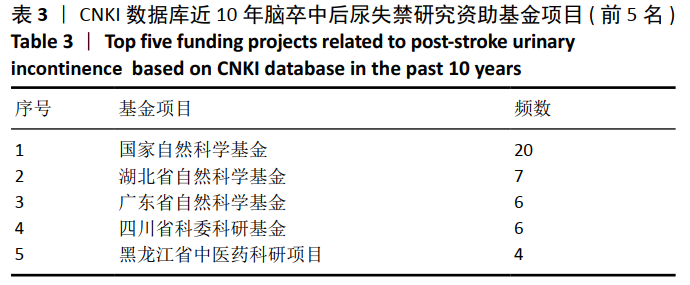[1] 何文亭,邢向娈,高焕民.中风发病机制的肝源说[J].医学争鸣,2017, 8(5):33-36.
[2] PEI J, YOU X, FU Q. Inflammation in the pathogenesis of ischemic stroke. FrontBiosci (Landmark Ed). 2015;20:772-783.
[3] ZHU LH, ZHANG ZP, WANG FN, et al. Diffusion kurtosis imaging of microstructural changes in brain tissue affected by acute ischemic stroke in different locations. Neural Regen Res. 2019;14(2):272-279.
[4] BAUER SR, GRIMESB, SUSKINDAM, et al. Urinary Incontinence and Nocturia in Older Men: Associations with Body Mass, Composition and Strength in the Health ABC Study. J Urol. 2019;202(5):1015-1021.
[5] HERON M, HOYERTDL, MURPHYSL, et al. Deaths:finaldata for 2006. Natl Vital Stat Rep. 2009;57(14):130-134.
[6] BROWN JS, VITTINGHOFF E, WYMAN JF, et al. Urinaryincontinence:does it increase risk for falls and fractures?Study of Osteoporotic Fractures Research Group. J Am GeriatrSoc. 2000;48(7):721-725.
[7] JOHN G, BARDINIC, MÉGEVAND P, et al. Urinary incontinence as a predictor of death after new-onset stroke: a meta-analysis. Eur J Neurol. 2016;23:1548-1555.
[8] ROTARM, BLAGUSR, JEROMELM, et al. Stroke patients who regain urinary continence in the first week after acute first-ever stroke have better prognosis than patients with persistent lower urinary tract dysfunction. Neurourol Urodyn. 2011;30(7):1315-3151.
[9] 何云燕,邹媛.脑卒中后尿失禁的治疗与护理现状[J].天津护理, 2018,26(5):619-620.
[10] 刘兰群,李惠兰.脑卒中后排尿障碍的中西医治疗[J].中国康复理论与实践,2013,19(11):1036-1038.
[11] ZHOU W, KOU AQ, CHEN J, et al. A retrospective analysis with bibliometric of energy security in 2000–2017. Energy Reports. 2018;(4): 724-732.
[12] 陈悦,陈超美,侯剑华,等.CiteSpace 知识图谱的方法论功能[J].科学学研究,2015,33(2):242-253.
[13] 魏娜敏,杜柏,石晶晶,等.中医“天癸”相关研究知识图谱分析[J].江苏中医药,2019,51(2):73-77.
[14] YANG Y, MENG GF. A bibliometric analysis of comparative research on the evolutionof international and Chinese ecological footprint research hotspots and frontiers since 2000. Ecological Indicators. 2019;(102):650-665.
[15] 李慧军,魏翠兰, 李垂坤,等.Citespace软件可视化分析运动与认知[J].中国组织工程研究,2020,24(14):2277-2283.
[16] CHEN CHAOMEI. Cite SpaceII:Detecting and visualizing emerging trends and transient patterns in scientific literature. J Am Soc Inf Sci Technol. 2006;57(3):359-377.
[17] 章小燕,雷黄伟,周常恩,等.基于CiteSpace的中医胆石症知识图谱可视化分析[J].中医药信息,2019,36(5):17-20.
[18] 王梅,裴文杰,马韶君.我国研究生教育研究领域作者合作网络的特征分析——基于CSSCI数据库的可视化研究(2001-2015)[J].研究生教育研究,2017(6):29-35.
[19] 王富祥.基于知识图谱的大数据研究可视化分析[J].华北理工大学学报(社会科学版),2017,17(1):56-62.
[20] 秦义,田元祥.基于 CiteSpace 的气虚证证候诊断标准知识图谱可视化分析[J].中医杂志,2015,56(18): 1588-1592.
[21] 李曌嫱,秦义,田元祥,等.针灸治疗腰椎间盘突出症的CiteSpace知识图谱可视化分析[J].中国针灸,2017,37(5):545-548.
[22] 王桂琴,方奕,易明.近五年我国青少年研究的前沿演进与热点领域:基于 CiteSpace 研究文献的可视化分析[J].中国青年研究, 2017(12):92-97.
[23] 石晶晶,薄荣强,胡元会,等.基于Citespace的中医导引术相关研究的可视化分析[J].中国医药导报,2018,15(4):94-98.
[24] DING W, CHEN CM. Dynamic Topic Detection and Tracking: A Comparison of HDP, C-word, and CocitationMethods. J Assoc Inf Sci Technol. 2014;65(10):2084-2097.
[25] 齐虹,闫静璇.基于知识图谱的我国信息行为研究态势分析[J].现代情报,2018,38(5):131-139.
[26] 于宗良,闫则宇,宋英,等.基于CiteSpace中药治疗类风湿关节炎的知识图谱分析[J].河南中医,2019,39(9):1366-1371.
[27] 蒋美荣.深刺八髎穴配合艾灸治疗脑卒中后急迫性尿失禁50例[J].中国民间疗法,2019,27(4):7-8.
[28] BROGAN E, LANGDON C, BROOKES K, et al. Can’t swallow, can’t transfer, can’t toilet: Factors predicting infections in the first week post stroke. J Clin Neurosci. 2015;22(1):92-97.
[29] GARIBALLA SE. Potentially treatable causes of poor outcome in acute stroke patients with urinary incontinence. Acta Neurol Scand. 2003;107(5):336-340.
[30] JOHN G, BARDINIC, COMBESCUREC, et al. Urinary Incontinence as a Predictor of Death: A Systematic Review and Meta-Analysis. Plos One. 2016;11(7):e0158992.
[31] 朱远玲,齐会玲,白宝华,等.中医三联疗法治疗腰椎全麻术后尿潴留的临床疗效[J].时珍国医国药,2018,29(4):913-914.
[32] 黄斌.穴位埋线结合中药治疗脑梗死后肾气不固型尿失禁的临床疗效研究[D].哈尔滨:黑龙江中医药大学,2017.
[33] CHOU YC, JIANG YH, HARNOD T ,et al. Characteristics ofneurogenic voiding dysfunction in cerebellar stroke: across-sectional, retrospective video urodynamic study. Cerebellum. 2013;12(5):601-606.
[34] 赵文静.温针灸八髎穴治疗中风后尿失禁的临床研究[D].武汉:湖北中医药大学,2019.
[35] 张静,黄明辉.新型拔管方法在老年男性患者留置导尿中的循证护理实践[J].中国老年保健医学,2019,17(5):131-133.
[36] GELBER DA, GOOD DC, LAVEN LJ, et al. Causes of urinary incontinence after acute hemispheric stroke. Stroke. 1993;24(3):378-382.
[37] 刘兰群,李惠兰,陈之罡,等.隔盐隔姜灸神阙穴治疗脑卒中后急迫性尿失禁的效果观察[J].中国康理论与实践,2015,21(4):475-478.
[38] 蔡文智,郭丽,王丽,等.广州市脑卒中住院患者尿失禁相关因素的调查研究[J].护理学报,2012,19(12):1-6.
[39] 郭丽,王静新,王丽,等.脑卒中后尿失禁住院患者排尿情况及膀胱管理分析[J].中国护理管理,2012,12(5):33-36.
[40] 王娟,蔡文智,王静新,等.急性脑卒中患者预后相关因素分析[J].中华神经医学杂志,2015,14(9):927-931.
[41] 胡益娟,钟冬灵,陈强,等.基于CiteSpace软件的国内近15年慢性稳定性心绞痛研究的文献计量及可视化分析[J].中国循证医学杂志,2020,20(5):568-575.
[42] 华强,夏文广,种玉飞,等.腹针配合盆底肌电生物反馈治疗脑梗死后尿失禁的疗效观察[J].上海针灸杂志,2020,39(7):844-850.
[43] 潘才钰,程一升,吴志鹏,等.间歇导尿联合针刺治疗脑卒中后神经源性膀胱的疗效观察[J].中国现代医生,2013,51(30):94-96.
[44] 金翊思,金春华,张桂珍,等.膀胱训练计划配合项针治疗卒中后尿失禁临床研究[J].河南中医,2014,34(3):510-512.
[45] 娄政驰,赵艳青,黄丽.基于 Citespace 软件分析 Web of science 数据库中针灸治疗中风研究的文献计量学规律[J].中医药信息, 2019,36(3):14-22. |
